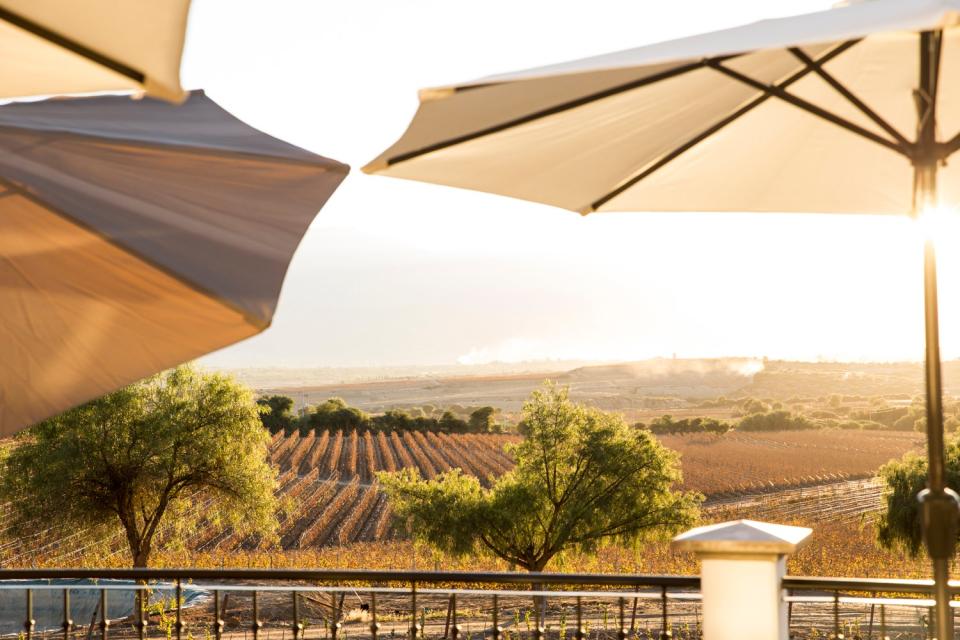7 Underrated Wine Regions to Visit in South America

Getty
Unlike coffee plantations, wine cultivation isn’t restricted by elevation or latitude, and in South America, you’re sure to stumble across vintages being made in well-known destinations such as Mendoza’s Uco Valley or Chile’s Maipó Valley. But there are a host of unexpected, up-and-coming regions across the continent, where you can sample vintages often paired with epic scenery, away from the crowds, yet surrounded by warm hospitality. Take Argentina’s extremely elevated La Quebrada de Humahuaca canyon, where light red Criolla and herbal, blackcurrant Malbec are produced at 8,200 feet above sea level. Peru’s Ica Valley, meanwhile, is usually known for Pisco production but now is the time to try the eight aromatic grape varieties as wine, rather than a spirit. As for Uruguay's glitzy Punta del Este beach resort town, a cluster of wineries are making crunchy ocean-influenced whites that pair perfectly with local catches of the day. Given the vast size of South America, explore this unsung terroir by car—it'll allow you to move slowly, and get even further off the well-trod path (good news: many of the area's wineries have stylish stays right on site).
Read on for seven underrated wine regions to visit in South America, from seaside destinations to high-altitude spots in the Andes.
Quebrada de Humahuaca, Jujuy, Argentina
Best for: Lovers of full-bodied reds and mountain trails
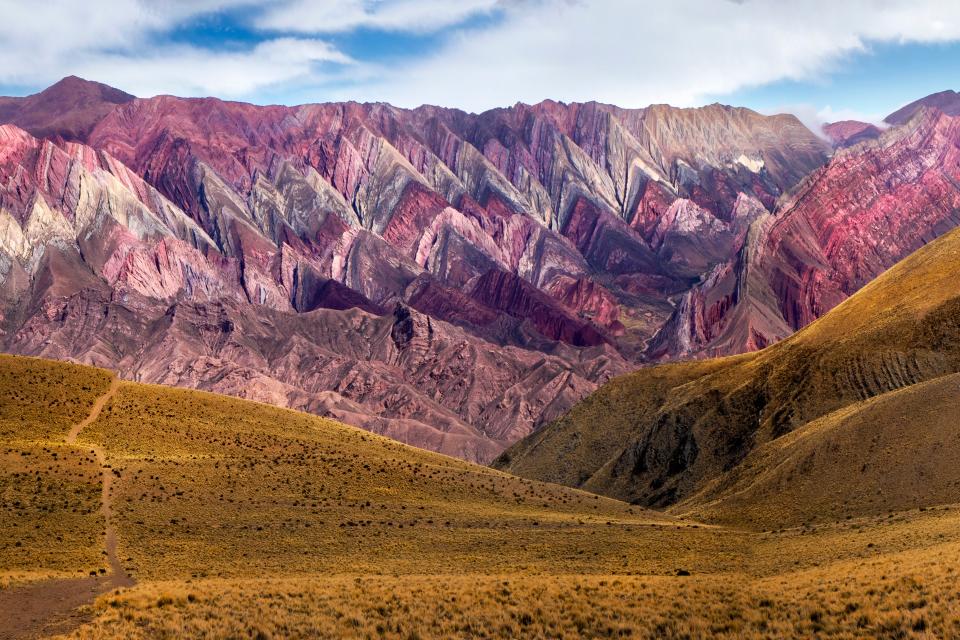
Quebrada de Humahuaca lookout at 4350m
If you love the Mendoza mountain wines made at 3,300 feet above sea level, soar even higher sampling vintages in the extremely elevated Quebrada de Humahuaca valley, which is part of the Qhapaq Ñan Inca trail network. From Buenos Aires fly to Jujuy, rent a car then drive 90 minutes north and check into Villa del Cielo in slow-paced Tilcara. It’s easy to spend three days visiting colorful towns that have existed since pre-Hispanic times such as Purmamarca and Tilcara, or the Salinas Grandes salt flats, but stay longer to traverse the (physically) breath-taking fledgling wine region, which is home to 12 bodegas (wineries). Located at 8,500 feet and higher, growers cultivate Malbec, Syrah, and Cabernet Franc across a tiny 132 acres at the foot of the geologically fascinating Cordillera Oriental mountain range. Bodega Kindgard opened its cellar and a three-room lodge to visitors in 2023: Wake up to splendid vistas of Purmamarca’s rosey-hued Cerro de los Siete Colores. El Bayeh in Huacalera, meanwhile, nurtures a special project gathering Criolla grapes from local families’ trellis vines: sample Pequeños Parceleros de la Quebrada over dinner at award-winning chef Florencia Rodriguez’ El Nuevo Progreso in Tilcara. New for 2024 is the solar-powered Tren Solar, whose 22-mile railway line starts at Volcán and ends at Maimará.
Province of Buenos Aires, Argentina
Best for: Crunchy coastal wines, surf towns, and sierras
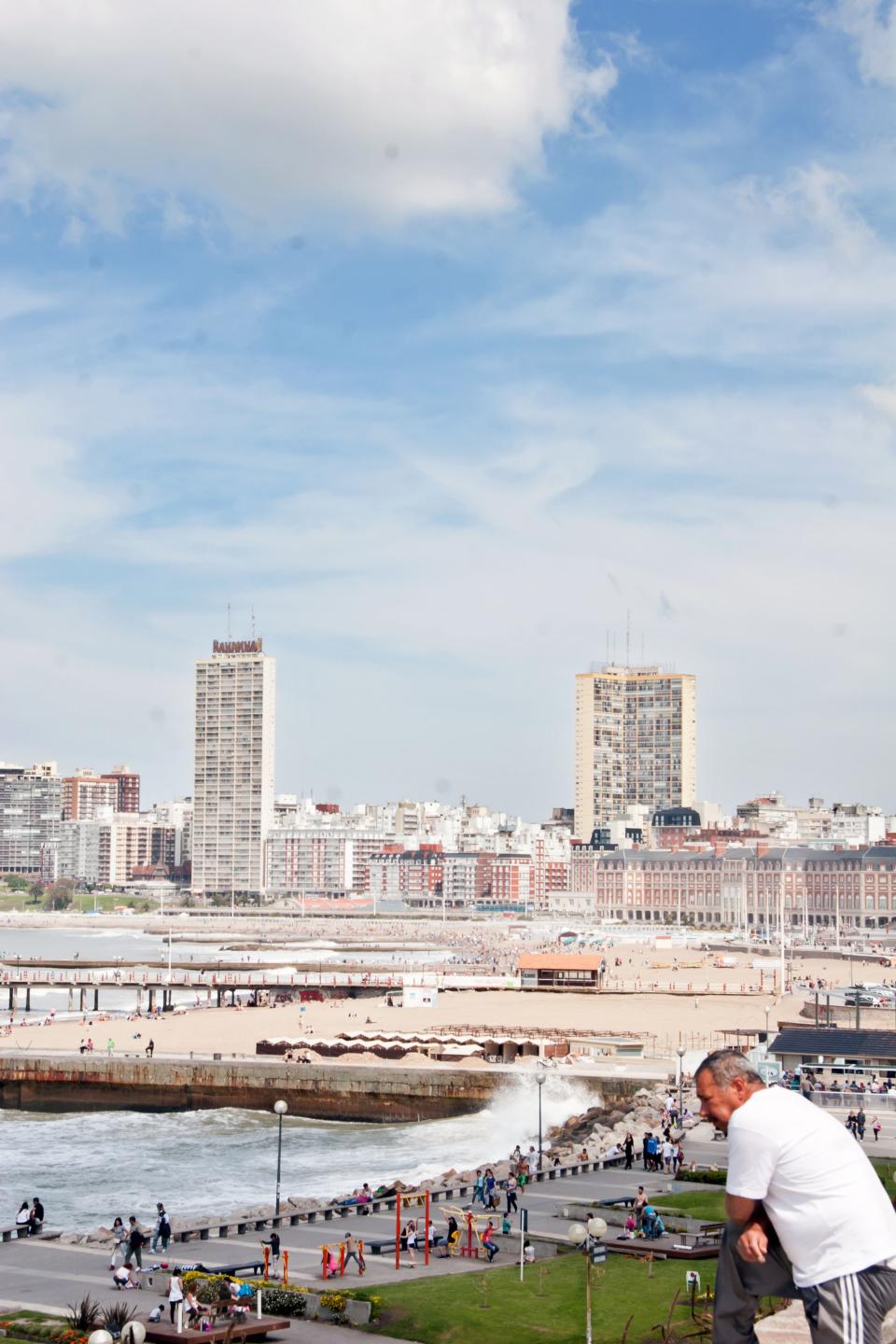
Mar del Plata promenade and skyline, Argentine
Bridging the Atlantic ocean and endless pampas prairie, a four-day road trip through the province of Buenos Aires is a delightful escape from the hustle and bustle of the country’s capital, with wines that fit the setting. Coastal resort town Mar del Plata is popular with Argentinian vacationers desperate to unwind in summer: Check in to Hotel Costa Galana and savor an Atlantic seafood-forward tasting menu at Mar Cocina Suratlántica restaurant before a digestif at Tiki Bar. The nearby beach town of Chapadmalal attracts a hipster set keen to rub shoulders with the surfing community. Grab a bite at Proyecto Pescado’s Chiringuito beachside diner then head to Costa & Pampa, a pioneering winery in the province that deals in cool climate-loving varieties such as Pinot Noir and Sauvignon Blanc; taste the Atlantic-influenced rosé Extra Brut in the morning with a fresh palate, then hang loose.
The six-hour drive to Bodega AlEste in Médanos isn’t for the faint of heart but the boutique winery is producing seven exciting maritime-influenced vintages. A mostly red portfolio with a single Chardonnay to its name, try the Terrasabia Malbec or more powerful Tannat. Dip into the thermal waters at Térmas de Médano then next morning drive five hours to Tandil to discover wines made on the Tandilia System–the world’s oldest sierras range whose 2.2 billion year-old hills are a beacon for hikers. Cabernet Franc, Merlot, and Syrah dominate Cordón Blanco’s vineyards. though the stylish Sauvignon Blanc is an excellent pairing for locally produced pepato sheep’s milk cheese from Tandil’s Epoca de Quesos.
Ica Valley, Peru
Best for: Funky natural wines paired with super scallops
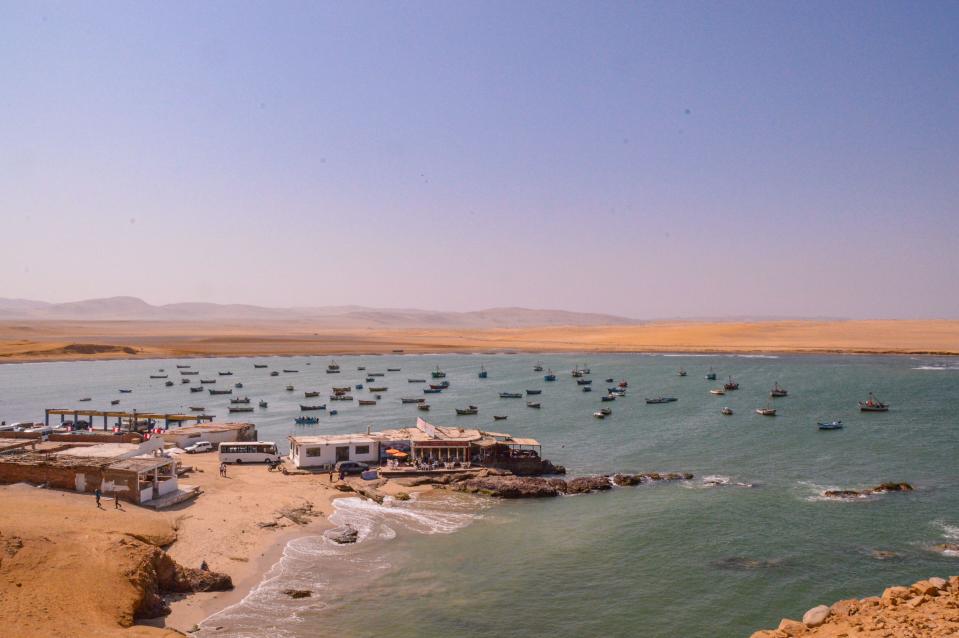
Desert Oasis in Ica, Peru.
A four-hour drive south of Peru’s capital, Limeños love mini breaks in the Paracas Peninsula. The national park embraces the Ballestas Islands and a Humboldt penguin colony that comes for the krill and nesting sites, as well as remarkable red sands at Playa Roja. Also close by is the Candelabra geoglyph, thought to be created by the Paracas civilization around 800 BCE.
Beyond the pink granodiorite and magma topography lies the Ica Valley, a maritime-influenced desert where Pisco grapes have been cultivated since the 16th century. This oasis, whose rolling sand dunes are broken up by a leafy tapestry of vineyards, holds a protected designation of origin: first, get a taste for the national spirit sampling young and barrel-aged piscos at Pisco 1615 – Bodega San Nicolas then dive deep into the valley’s wineries. Following a newfound appreciation for Pisco’s heritage varieties, growers are turning their hands to winemaking, and vintages are making the cut at world-class restaurants such as Central and Maido. Book a tasting at Viñas Queirolo, known for Intipalka power reds and Moscatel de Alejandria, one of the Pisco varieties, and stay overnight at the hacienda; it’s a 40-minute drive north into the Upper Valley. Pampas de Ica, meanwhile, has picked up rave reviews for citrus Blanco Patrimonial, made with Pisco varieties Albilla and Torontel; located 10 minutes from downtown Ica, it’s a great spot to sample a four-flight tasting.
Maldonado, Uruguay’s east coast
Best for: Sunset sipping with a smart set come summer
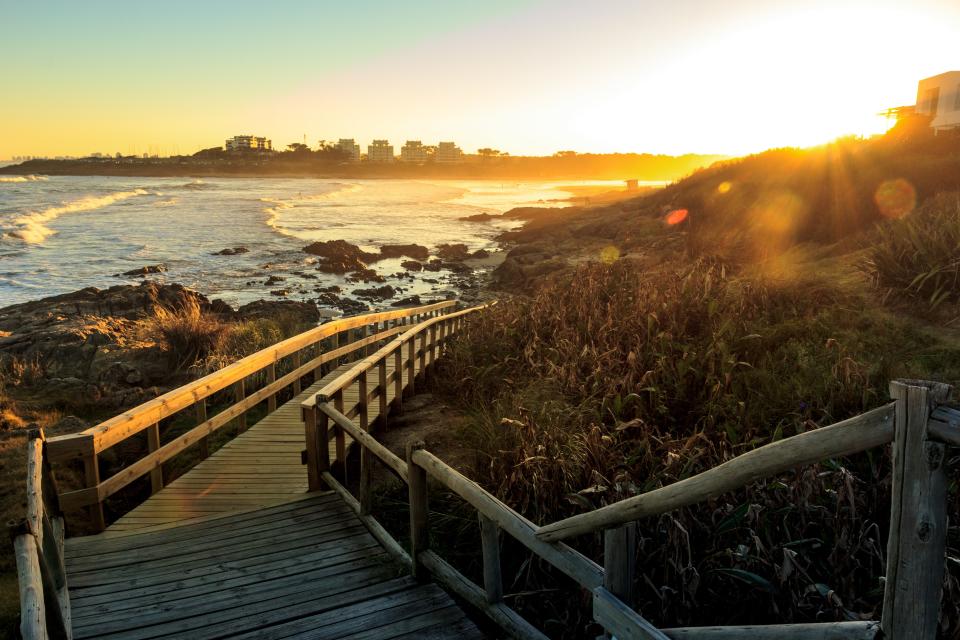
Sunset in "La Barra" beach, Punta del Este, Uruguay
The jewel in Uruguay’s coastal crown, the smart set heads for Punta del Este every January, keen to frolic in the ritzy resort town’s Atlantic waves by day, then wine and dine at night. A two-hour drive from Montevideo, the peninsula easily packs out in summer so reservations are essential at seafood specialist Lo de Tere—order local Albariño—and French restaurant La Bourgogne, where a fresh maritime-influenced Pinot Noir hits the spot. Those after a more serene southern hemisphere vacation head to satellite beaches La Barra, Mantantiales, and ultra-hip José Ignacio, where chef Francis Mallmann opens up Chiringuito each summer; La Huella Parador is unbeatable for lazy lunches devouring grilled seafood. Take your pick of luxury lodges, from Fasano Las Piedras’ magnificent, rural bungalows, artist-driven Posada Ayana that shares space with James Turrell’s Ta Khut skyspace, and beachside retreat Playa Vik.
Beyond the dunes toward Garzón, 30 minutes by car north of José Ignacio, lies a flourishing new wine region whose rolling hills lined with olive groves and vineyards that hint at Tuscany. Uruguay’s signature grape is Tannat, but in Maldonado a venerable cast of producers is making fresh, ocean-inspired whites and Pinot Noir that effortlessly accompany the glorious seafood. A multi-award winning architectural masterpiece, make a lunch reservation at Bodega Garzón (another Mallmann haunt where he is the culinary director). Paired with the valley views, a glass of chilled Albariño is an ideal digéstif. Most wineries here, though, are bijou in size and volume. Viognier is the star turn at Alto de la Ballena, named after the southern right whales often spotted in the nearby ocean, and it’s especially savored over a Uruguayan caviar masterclass and tasting. Compañía Uruguaya de Vinos del Mar in Pueblo Garzón, meanwhile, makes notable Albariño and Pinot Noir, while Bodega Oceánica has taken the plunge with a skin-contact Chardonnay/Albariño orange wine: both bodegas offer private tastings.
Valparaíso and Casablanca Valley, Chile
Best for: Pacific-influenced whites and eclectic architecture

Wines from Chile are maybe the best on the world, we can see the vineyards at Casablanca, Valparaiso, thousands and thousands of grapes growing creating rows over the infinity land on an awe landscape
Port city and UNESCO World Heritage Site Valpo, as Valparaíso is fondly known, is a refreshing urban alternative to the capital of Santiago, located an hour’s drive away. Valpo’s steep streets and rocky stairways will get your heart rate going but the vibrant architecture that spans art nouveau, Bauhaus, and French Neo-Baroque styles, including author Pablo Neruda’s eclectic La Sebastiana home, is worth every droplet of sweat. (The 16 Industrial-age funicular elevators dating back to 1883, considered national monuments, ease the pain.) Wander the sinuous alleys at liberty, and stumble across regenerated casonas (19th century mansions) such as El Internado on Cerro Alegre, now home to specialist coffee roaster WIP. For dinner with unrivalled views of the Pacific port, book a table at La Caperucita y el Lobo.
In January 2024, savage wildfires devastated some of the Valparaíso region, but you can support the recovery by making Valpo your base to explore local vineyards. After scrambled eggs at the darling five-room Fortunata Chacana guesthouse, drive 30 minutes to start sampling Casablanca’s cool-climate vintages. While the valley houses big players, boutique viñas (wineries) are resting outstanding vintages. A five-course lunch awaits at family-run Villard Fine Wines—a firm favorite with wine-quaffing Swedish rock band Europe when they are in town: try Villard’s edgy, Pacific-influenced Chardonnay and Syrah. Bodegas RE, meanwhile, take a mixed musical approach to winemaking. Besides creating unexpected blends such as Chardonnoir and Pinotel, a soundtrack accompanies the aging process, beats encouraging movement in clay amphorae.
Tarija, Bolivia
Best for: Heritage reds and archeological hiking trails
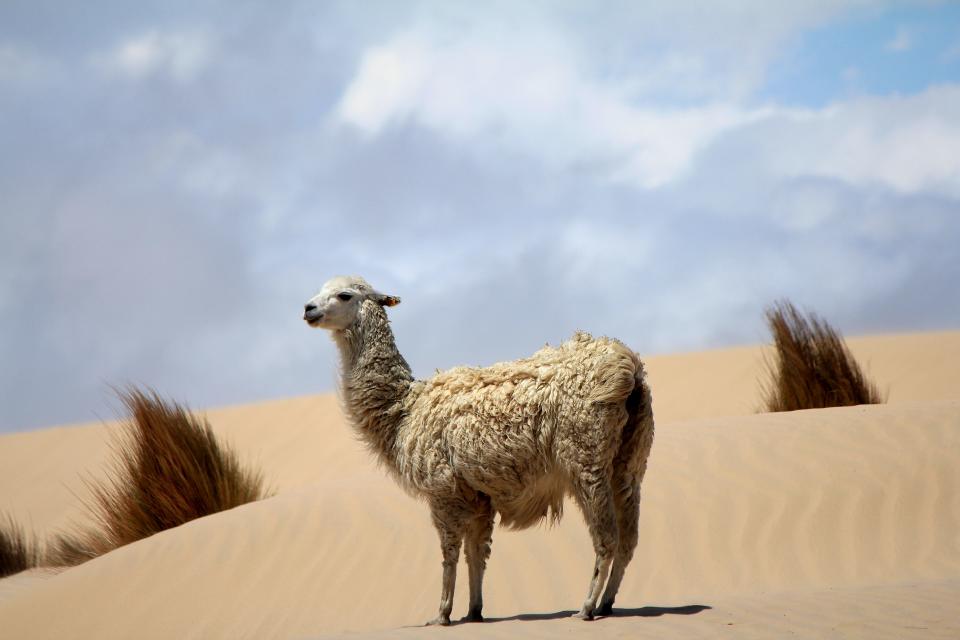
Llama and sand dunes at Arenales in the Reserva de Sama protected area, Tarija, Bolivia
And how you can start drinking Bolivian wine right now.
After an expedition to Salar de Uyuni salt flats or traversing the unique capital city La Paz, breathe a little easier in Tarija. Part of the same ancient Qhapaq Ñan trail in Jujuy, the southern Bolivian city is a magnet for archaeologists and wine aficionados, as well as the center of Singani production, Bolivia’s heritage eau-de-vie made with the Muscat of Alexandria variety. A six-hour drive north from the Argentinian border, Tarija’s vineyards contrast with those in neighboring Quebrada de Humahuaca. Yes, they are still extreme, elevated at 6,100 feet above sea level but wide and open, with an energetic Andean backdrop. This is the setting that Oscar-winning movie director Steven Soderbergh chose for Singani 63, his personal spirits project with 1925-founded Casa Real. Similarly to Peru’s Ica Valley, distilleries have turned their attention to wine, using Muscat and cultivating powerful red varieties such as Tannat and Cabernet Sauvignon. Stay at Los Ceibos and book a big red tasting with an archaeological slant at Cañon Escondido, and Campos de Solana, which proudly shows off the terroir’s biodiversity on a trek. The natural wine movement has also picked up pace, driven by demand from top La Paz restaurant Gustu; the winery doesn’t open to the public, but look out for Jardín Oculto’s Negra Criolla made with grapes from heritage vines.
Itatá Valley, Chile
Best for: Natural wines and nature’s charms
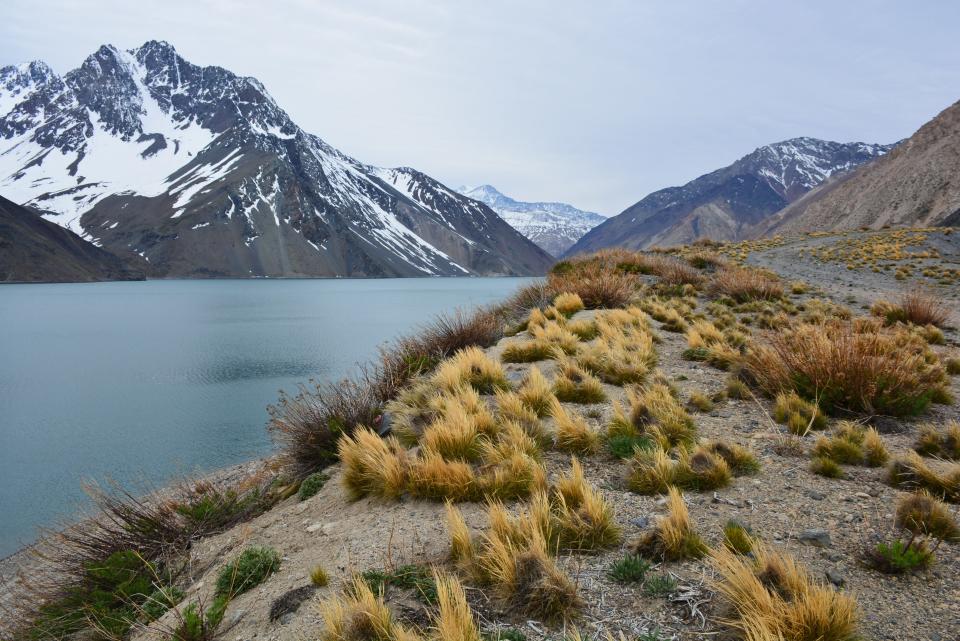
Landscape of mountain snow and lagoon
An energetic student hub, the port city of Concepción is a lively alternative to Santiago, Located an hour’s flight south of the capital, dip into the local cocktail and live music scenes–Secret 1920 is the bar to frequent—while planning an escape to Itatá wine country, 45 minutes away by car. An industrial stronghold in a previous life, Concepción also houses an abundance of natural charms such as Isla Mocha—home to 500 avian species—coupled with Mapuche Indigenous culture.
On the doorstep of this thriving student hub is one of Chile’s most exciting regions for natural wines, ungrafted vines, and heritage varieties. Volcanic and slate soils join forces with Pacific influence to create fresh yet complex offerings made by many independent producers, who draw from Itatá’s pre-phylloxera heritage vines to make low-intervention vintages. Leading varieties include exciting light-bodied reds País, Carignan, and Cinsault cultivated on bush vines: Viticulturist Leonardo Erazo Lynch of Rogue Vine in Quillon produces some of Chile’s finest natural wines at his solar-powered bodega, while young gun Pino Román works out of Guarlihue to create Pét-Nat sparkling wine from País and Chasselas skin-contact. For an Itatá-driven, low-intervention flight, stop by Borra Bar de Vinos, also in Guarilihue.
Originally Appeared on Condé Nast Traveler

